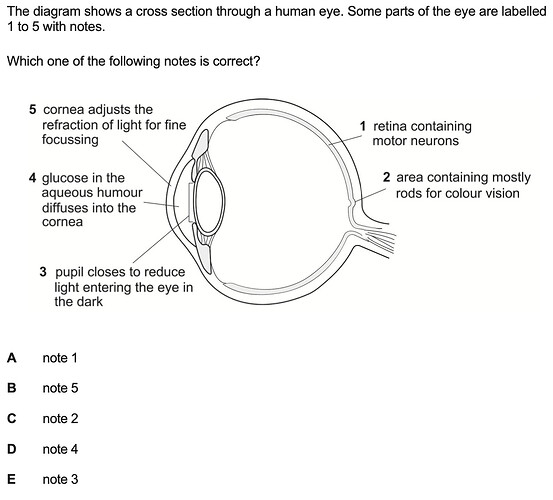The answer is D but I don’t understand why note 5 is incorrect. Can someone explain this?
Hi!
Cornea is where light ENTERS or passes as it enters through the pupil.
Pupil also “ADJUSTS” amount of light
Lens & vitreous fluid “REFRACTS” light
Pupil & Iris adjust light
Sympathetic: Pupil Dilation_Iris Contracts_Pupil enlarges (Low Light)
Parasympathetic: Pupil Reduction_Iris Enlarges_Pupil reduces (Intense Light)
The Iris is the muscle that controls the size of the pupil & ultimately “adjusts” for the amount of light entering the eyes.
Refraction: Change in direction, due to speed change.
Lights falls on lens, lens refracts light focusing it on the retina.
Myopia: Nearsightedness_Long eye. Focus of light is short prior to retina.
Now I got it. Thank you so much for the explanation!
Hi, I just wanted to mention that the cornea does refract light. In fact, 80% of the refraction occurs at the cornea and only 20% occurs at the lens. However, the fine focussing of light in statement 5 is what makes it incorrect as the fine focusing does occur at the lens.
another thing to remember is that there are two body parts that have no capillary network: cornea and cartilage. Therefore, their only option to receive nutrients is via diffusion from a nearby source that does receive blood. in the case of the cartilage, it is the synovial fluid and for the cornea, it is the aqueous humour. the lack of capillary network in cornea and cartilage also allows for the transplant of those to occur without needing the donor to match.
